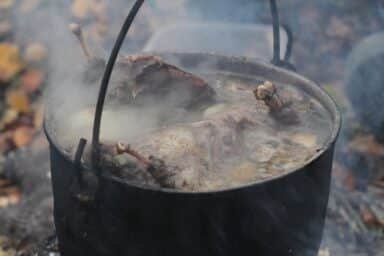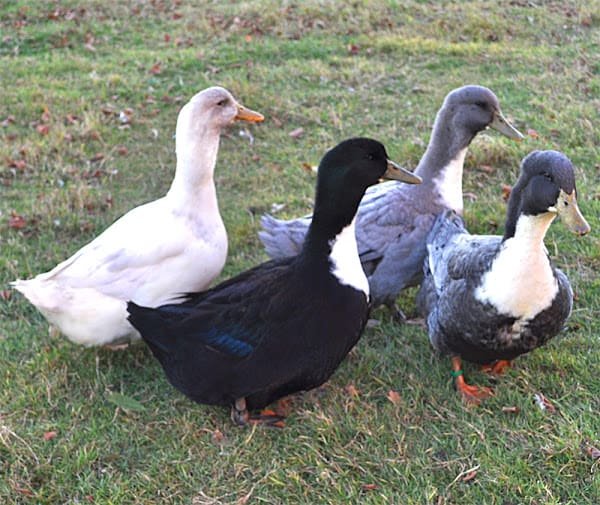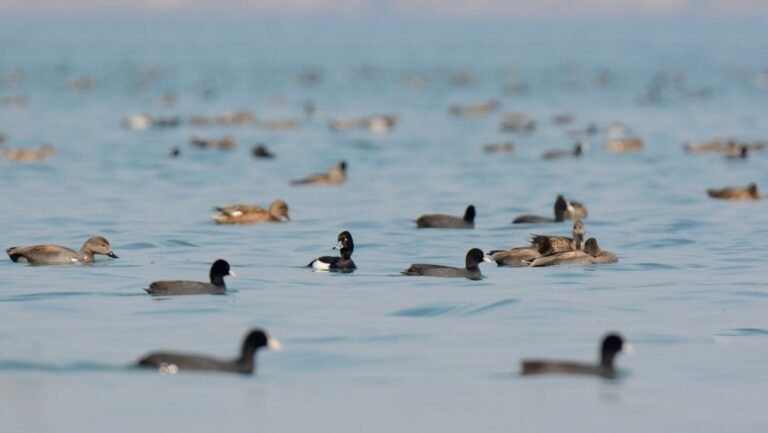How To Cook Waterfowl – What You Need to Know
Waterfowl, such as ducks and geese, have long been revered for their succulent and flavorsome meat. These birds offer a delightful culinary experience with their tender texture and distinct taste. Over the years, those who cook waterfowl have become admired chefs by adventurous food enthusiasts.
The Poultry Conundrum: Waterfowl
Regarding poultry, most people’s minds might immediately jump to chicken or turkey. However, waterfowl should not be overlooked. Waterfowl have become a sought-after ingredient in kitchens worldwide with its unique flavor profile and versatile meat that lends itself well to various cooking techniques.
The Smoking vs. Grilling Dilemma
Two primary cooking methods stand out for preparing waterfowl: smoking and grilling. Each technique offers distinct advantages and remarkable flavor profiles that elevate your culinary experience. This article will delve deep into the world of smoking and grilling waterfowl. We will explore the intricacies of each method so you can make an informed decision on how to cook these delectable birds best.
Smoking Waterfowl: Slow and Flavorful
Smoking waterfowl is a cooking technique employed for centuries and is known for imparting a distinct smoky flavor and creating tender, succulent meat. The process involves slow-cooking the bird over indirect heat, allowing the smoke from burning wood chips to circulate the meat and infuse it with its aromatic essence. This low-and-slow method ensures that every bite is infused with deep, rich flavors that tantalize the taste buds.
Infusing Rich Smoky Flavors into the Meat
One of the primary benefits of smoking waterfowl is the incredible depth of flavor it adds to the meat. As the wood chips smolder and release fragrant smoke, they envelop the poultry in a cloud of deliciousness.
The smoke particles penetrate every crevice of the bird, seeping into its fibers and infusing them with an irresistible smokiness. Each bite becomes a delectable harmony of juicy meat infused with subtle woody undertones that dance on your palate.
Achieving Tender and Juicy Results through Slow Cooking
Another advantage of smoking waterfowl is its ability to transform tough cuts into tender delights. Cooking at low temperatures over longer periods allows collagen to break down gradually without sacrificing moisture content. This slow-cooking method allows connective tissues within the meat to melt away gently while locking in natural juices, resulting in exceptionally moist poultry that practically melts in your mouth.
Highlighting the Versatility of Different Wood Chips for Unique Flavors
An interesting aspect of smoking waterfowl is experimenting with various wood chips to create an array of unique flavors. Different wood chips contribute distinctive characteristics to each dish, allowing you to tailor your culinary creation according to personal preferences.
For instance, hickory chips add a robust smokiness, while fruitwood chips like apple or cherry impart a slightly sweet and fruity essence. The versatility offered by different wood chips provides endless opportunities to explore and create an unparalleled culinary experience.
Types of Smokers for Waterfowl
When it comes to smoking waterfowl, the type of smoker you choose can greatly influence the outcome of your culinary endeavor. Let’s explore three popular types of smokers that can take your cooking experience to new heights.
Traditional Charcoal Smokers: For Authentic Smoky Taste
Ah, nothing beats the allure of a traditional charcoal smoker. Barbecue enthusiasts revere these iconic vessels for their ability to infuse food with that unmistakable smoky flavor.
Charcoal smokers use real wood or charcoal as fuel, producing an authentic taste that food connoisseurs crave. The low and slow cooking process in these smokers allows the waterfowl to absorb the rich essence of hardwood, resulting in meat that practically melts in your mouth.
The aromatic qualities of a charcoal smoker will undoubtedly transport you to flavor heaven.
Electric Smokers: Convenience and Precise Temperature Control
If convenience is what you seek without compromising on taste, then an electric smoker may be your best bet. Electric smokers provide an effortless experience by eliminating the need for fire management or constant monitoring. With just a push of a button, these modern appliances regulate temperature precisely, ensuring consistent cooking results every time.
Additionally, electric smokers often come equipped with handy features like digital controls and timers, allowing you to set it and forget it while achieving fantastic flavors.
Pellet Smokers: Consistent Heat and Enhanced Flavor Options
Pellet smokers have gained considerable popularity among grill masters, seeking ease of use and exceptional results. These versatile smokers use compressed wood pellets as their fuel source and offer a wide range of flavors to enhance the taste profile of your waterfowl selection. The options are endless, from classic hickory to mesquite or fruitwood flavors like apple or cherry.
Moreover, pellet smokers feature automated temperature control systems that maintain consistent heat levels throughout the smoking process. This ensures that your waterfowl is cooked evenly and imbued with the desired smoky essence that will delight your taste buds.
These three options offer distinct advantages when selecting the perfect smoker for waterfowl cooking adventures. Whether you prefer the traditional charm of charcoal smokers, the convenience of electric smokers, or the versatility of pellet smokers, each type can elevate your culinary creations uniquely.
Subtopic: Preparing Waterfowl for Smoking
Enhancing Moisture and Flavor with Brining
When it comes to smoking waterfowl, one crucial step in the preparation process is bringing. Brining involves soaking the bird in salt, water, and sometimes additional seasonings, allowing the meat to absorb moisture and flavors.
This technique helps prevent the meat from drying out during the long smoking process and enhances its natural juiciness. Combine water and salt in a large container to create a brine for your waterfowl.
Dissolve the salt completely before adding any other desired seasonings or aromatics. You can get creative by incorporating ingredients such as sugar, garlic cloves, bay leaves, or herbs like thyme or rosemary to infuse additional flavors into the meat.
Once your brine is well-mixed and seasoned to your liking, immerse the bird in it for several hours or overnight in the refrigerator. The time required to bring depends on the size and type of bird you’re working with.
Generally speaking, larger waterfowl will benefit from longer brining periods—up to 24 hours—while smaller ones might only need around 4-6 hours. Remember that patience is key to achieving perfectly moist and flavorful smoked waterfowl!
Dry Rubs and Marinades: Elevating Smoky Flavors
While smoking imparts incredible smoky notes into your waterfowl’s meat naturally, complementing those flavors with suitable dry rubs or marinades can take your dish to new heights of deliciousness. Dry rubs are mixtures of spices, herbs, sugars, salts, and other seasonings gently massaged onto the bird’s surface before smoking.
They form a flavorful crust during cooking while imparting a tantalizing aroma. Common spices found in dry rubs for waterfowl include paprika, garlic powder, onion powder, cayenne pepper, and black pepper.
You can adjust the amounts of each ingredient based on your preference and desired flavor intensity flavor. Marinades, on the other hand, are liquid concoctions that the bird is soaked in before smoking.
They work by infusing additional flavors into the meat while also tenderizing it. A classic marinade for waterfowl may contain ingredients like soy sauce, lemon juice, olive oil, honey or maple syrup for sweetness, and various herbs and spices.
To maximize flavor absorption during marination, pierce the skin or make small incisions into the meat so the marinade can penetrate deeper. Whether you opt for a dry rub or a marinade—or even combine both techniques—you have endless choices to tailor your flavors to your liking.
Experiment with different spice combinations or incorporate regional influences that reflect your culinary preferences. Remember that moderation is key when using seasonings in conjunction with smoking techniques.
The goal is to enhance and complement the smoky taste rather than overpower it. With a well-executed brine and carefully chosen spices or marinades, you’re on your way to creating an unforgettable smoked waterfowl feast!
Grilling Waterfowl: Quick and Intense Heat
My friends, grilling is a cooking technique that truly brings out the primal pleasure ofof preparing waterfowl. Picture this: crackling flames, sizzling meat, and that unmistakable aroma wafting through the air.
It’s a sensory experience like no other. Grilling involves applying direct heat to the waterfowl quickly, creating an intense cooking environment that results in unique flavors and textures.
Achieving Crispy Skin While Retaining Moisture Inside
One of the great joys of grilling waterfowl is achieving perfectly crispy skin that crackles with every bite. The grill’s high heat helps render the fat underneath the skin while locking in moisture within the meat.
This creates a delightful contrast between crispy, golden-brown skin, and tender, succulent flesh. The technique requires skill and attention to prevent overcooking or drying out the delicate meat, but when done right, it’s pure culinary bliss.
Creating a Charred, Caramelized Flavor Profile
Ah yes, my dear readers, let us not forget that alluring charred flavor can only be achieved through grilling. The waterfowl undergoes a magical transformation as it cooks over open flames or hot coals.
The sugars present in the meat caramelize upon contact with direct heat, adding depth and complexity to its taste profile. Imagine biting into a perfectly grilled duck breast with those tantalizing grill marks seared into its surface – an explosion of smoky deliciousness!
Highlighting Speed and Convenience Compared to Smoking
For those times when we crave instant gratification (and who among us hasn’t?), grilling comes to our rescue with its inherent speed and convenience. Unlike smoking – which demands patience as it slowly imparts flavors over several hours – grilling allows us to cook waterfowl quickly. Whether it’s an impromptu gathering or a sudden craving that strikes, firing up the grill can have you feasting on succulent birds in no time.
Plus, let’s not forget the minimal cleanup involved compared to smoking; just a few brush strokes on the grates, and you’re good to go! So there you have it, my friends – grilling waterfowl is an art form that rewards us with crispy skin, tender meat, and an irresistible smoky flavor profile.
It offers both speed and convenience for those moments when time is of the essence. So next time you plan a feast for kings and queens, consider harnessing the power of flames and embrace the thrill of grilling your waterfowl to perfection!
Types of Grills for Waterfowl
Charcoal grills for traditional smoky taste with direct heat
One popular option for grilling waterfowl is using a charcoal grill. The beauty of a charcoal grill lies in its ability to deliver that timeless, smoky flavor that we all love.
The process begins by lighting up the charcoal and allowing it to reach the perfect level of ash-covered heat. Once the coals are ready, you can place your well-seasoned waterfowl directly on the grid above the coals, infusing it with an unmistakable smokiness as it cooks.
Charcoal grills offer excellent control over the cooking temperature, allowing you to adjust for optimal results. Plus, they provide that nostalgic experience of tending to a real fire while enjoying the anticipation of your delicious meal.

Conclusion
Both methods have a unique charm and culinary delights in the eternal debate between smoking and grilling waterfowl. Smoking imparts a slow-cooked tenderness and an enchanting smoky flavor that can elevate any dish.
On the other hand, grilling offers a more intense cooking experience with crispy skin and enticing caramelization. Each technique has loyal followers who swear by their chosen method’s superiority.
However, in this friendly rivalry, it’s essential to remember that there’s no right or wrong answer when deciding how to cook waterfowl. It all comes down to personal preference and experimenting with both methods to discover which tickles your taste buds just right.
So whether you opt for the leisurely pace and aromatic allure of smoking or prefer the swift intensity and charred perfection of grilling, rest assured that whichever path you choose will lead you on a delightful culinary adventure where mouthwatering flavors await at every turn. Happy cooking!







https://dirstop.com/story20951208/new-balance-574